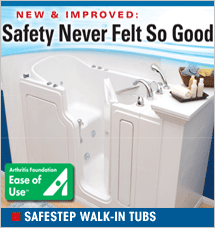
Like many older people, I have a problem with my knees.
One very good reason is that the knee is complicated. It has three different joints. Medically speaking, the medial femoral and medial tibial condyles, the lateral femoral and tibial condyles, and the articulation between the patella and the femur.
The knee joint is capable of several motions, namely flexion, extension, and medial and lateral rotation to a degree. It’s also the joint most susceptible to injury. Common knee injuries are tears to the anterior cruciate ligaments (ACL) and tears to the meniscus or cartilage.
The main parts of the knee joint are bones, ligaments, tendons, cartilages and a joint capsule, all of which are made of collagen. Collagen is a fibrous tissue present throughout our body. As we age, collagen breaks down. I suspect that’s my problem.
I suppose, as a male, I’m lucky. That’s because women are the weak-kneed sex. Years of stooping and kneeling, as most women have to do, takes its toll. Studies show that women are six times more likely than men to suffer ACL tears.
Although it’s usually called “runners knee,” a condition called patellofemoral syndrome also can affect those who are sedentary. The pain you feel comes from a misaligned kneecap scraping over the lower end of your thighbone.
Women have wider pelvises – this causes their thighs to slant inward more than for men which places extra force on a woman’s knees. According to WebMD, you can relieve that knee pain, whether it’s from arthritis or stooping or jogging when you were younger.
- Don’t rest too much. Too much rest can weaken your muscles, which can worsen joint pain. Find an exercise program that is safe for your knees and stick with it. If you're not sure which motions are safe or how much you can do, talk with your doctor or a physical therapist.
- Do some exercises such as walking and swimming. Tai Chi can help relieve stiffness and help improve your balance. My wife bought me a Hurrycane (which you’ve probably seen advertised.) The cane gives me a brace to lean on.
- Make sure your stairways have railings. A fall could worsen your knee problem.
- Use an ice pack or heat on the knee or knees (Both of mine are in pain.)
- Also elevate your feet.
- Sleep with a pillow under your knees if you sleep on your back.
- Watch your weight. The more you weigh, obviously, the more stress you put on your knees.
- Ask your pharmacist about salves that might provide some relief. I’ve been using something called “Tiger Balm.” You rub it into your kneecaps morning and night.
- Consider acupuncture. Although some have fond it worthless, it has relieved pain in others.
- Cushioned insoles in your shoes can reduce stress on your knees. Some doctors recommend special insoles for knee osteoarthritis.
- And there are always pain killers. Many people use NSAIDs. NSAIDs – nonsteroidal anti-inflammatory drugs – are a type of pain reliever. These drugs, such as aspirin and ibuprofen also reduce inflammation.
Inflammation is the body's response to injury and is characterized by redness, warmth, swelling, and pain. NSAIDs are used to treat a variety of conditions that cause pain and inflammation, including arthritis and tendinitis.
Tait Trussell is an old guy and fourth-generation professional journalist who writes extensively about aging issues among a myriad of diverse topics.




























































